Impact of Typhoon "Mangkhut" on Curtain Wall for Buildings in Hong Kong, Shenzhen and Guangdong (III) — — Cause Analysis and Experience Summary of Curtain Wall Damage
After Typhoon Mangkhut, FORCITIS visited Hong Kong, Shenzhen and Guangzhou on the spot to understand the extent of damage caused by typhoon to building doors, windows and curtain walls, and held a discussion with some industry experts in Shenzhen to discuss the impact of typhoon on doors, windows and curtain walls and preventive measures.
Through the inspection in Guangzhou and Shenzhen, it was found that a large area of the building was intact, and a few of the facade areas were damaged. Under the attack of such a strong typhoon, the overall performance of the doors, windows, and curtain walls of super high-rise buildings in Guangzhou and Shenzhen was excellent, indicating that curtain walls, as the majority of building envelope structures, could also be trusted in terms of design, construction, and material quality. However, the damage to some doors, windows and curtain walls in typhoons also reminds us that the safety of building doors, windows and curtain walls in typhoon-prone cities can not be ignored. We will analyze the possible reasons for the damage to doors, windows and curtain walls in typhoon, so as to sum up experience and correct the design and construction of doors, windows and curtain walls in the later period.
The types of damage to curtain wall during the typhoon are classified as follows:
1.Falling of opening sash
2. Overall falling of unit plate
3. Damage to glass panel
4. Damage to metal roof
Cause analysis of damage to building curtain walls in typhoons:
1. Analysis of possible reasons for falling of opening sash
Building curtain walls are mostly damaged by typhoons at the positions of opening sashes, which have different specifications and structural forms and are damaged in different ways.
(1) Damage causes of hook-type opening sash
The hook-type opening sash is hung on the curtain wall beam through the upper horizontal frame of the sash, and its opening angle is limited by the wind bracing. The bearing capacity of the whole sash is mainly on the upper beam of the sash, and there are two types, i.e. split type and integral type.
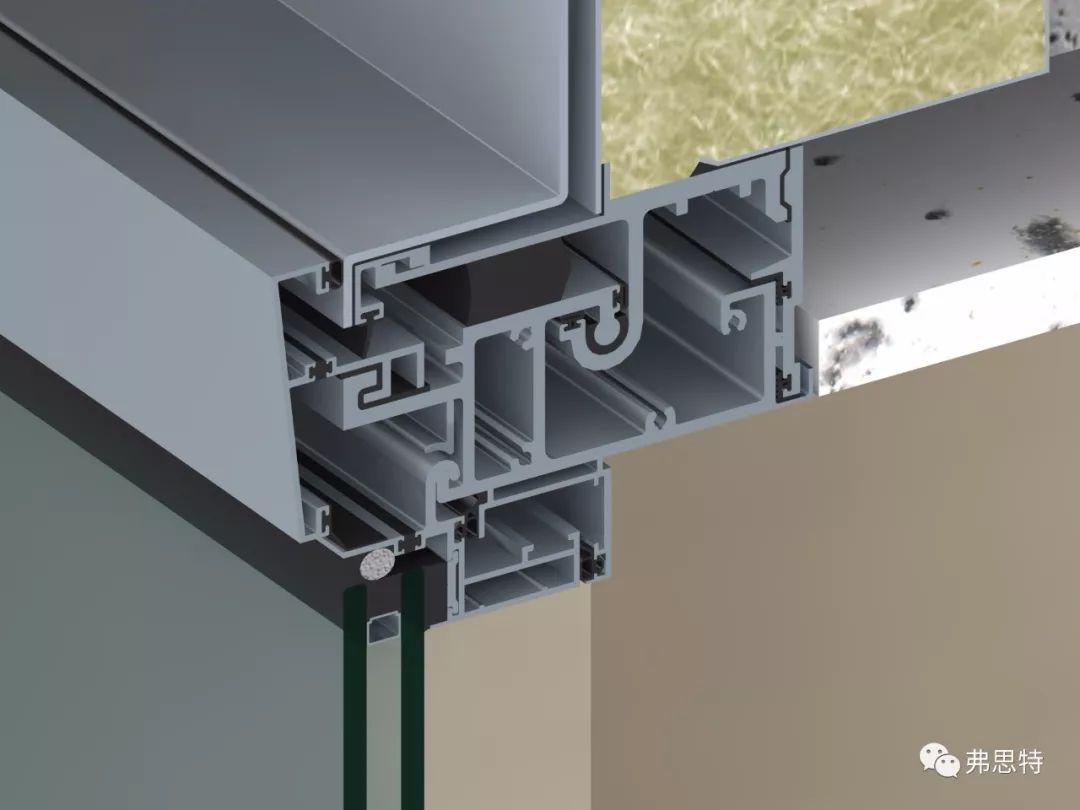
▲ Schematic diagram of hook-type opening sash
In the design of glass curtain wall opening sash, the hook-type connection has the characteristics of large bearing capacity and can meet the use requirements of opening sashes with large size because the window sash and the window frame are hinged by hooks or through long shafts. However, as the hook-type open window is installed by direct connection, it is easy to fall off when it encounters strong winds during use, resulting in certain safety risks. Therefore, reliable anti-fall devices are required to ensure normal use.
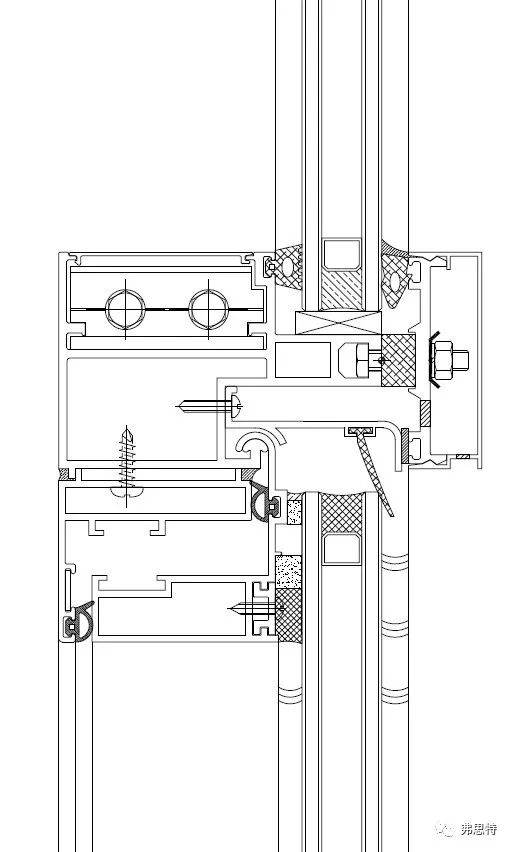
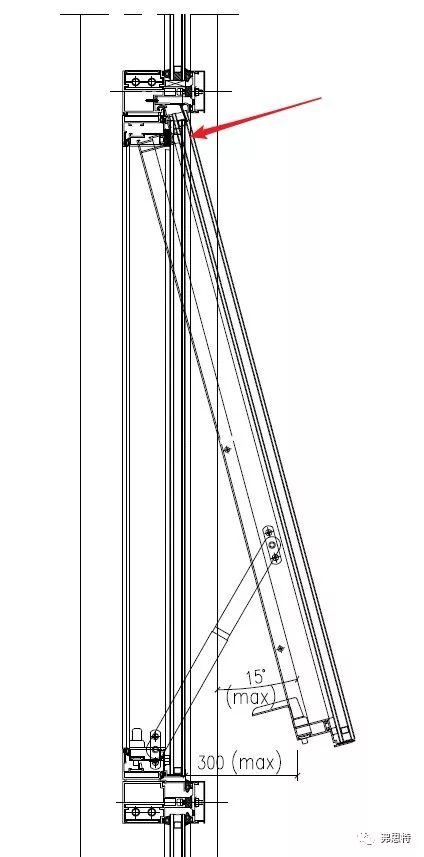
▲ Hook-type curtain wall opening sash
We learned that part of the window sash destroyed by Typhoon Mangkhut is of hook-type structure. After the window sash fell, only the upper transverse frame of the window sash remained hanging on the beam.
When the lock point of the hook-type window sash is damaged or the window sash is not closed, the window sash will be in a free swing state, and the wind bracing will be broken under the repeated action of positive and negative wind pressure of typhoon. Once both wind bracing fails, the window sash will be lifted by the typhoon. The corners of the window sash are riveted by squeezing the corners. When the window sash is lifted to the limit, the upper frame of the window sash will bear a very large torque force, which will make the riveting point fail, pull out the connecting corner, tear the structural glue between the aluminum frame and the glass, and cause the sash to fall.

▲ Damaged wind bracing
Despite of some measures to prevent the hook from separating at present, the requirements for the material and structural stability of the hook matching part are very high in the case of excessive negative wind pressure borne by the window sash. With the increase of the use time, the hook matching part is very easy to wear or even damage, resulting in the failure of the anti-drop function.

▲ Upper frame of hook-type window sash left after sash falling
(2) Reasons for damage to four-link friction hinge opening sash
This form of opening sash is that the two mullions of the window sash are connected and fixed with the vertical edge of the window frame or the mullion of the curtain wall through friction hinges. Larger window sashes are friction-type hinges used in conjunction with wind bracing to limit the opening angle.
Early curtain walls and window sashes were not large and used friction hinges, even if the sash was not locked, it would not blow off in strong winds. Nowadays, the glass curtain wall is required to have larger and larger division in order to pursue transparency and magnificence, and the curtain wall opening sash also become larger, which increases the risk of the window sash falling due to wind damage.
(3) Multi-point lock failure
Even if the window sash of the curtain wall is closed, it may be damaged under the action of strong wind.
The falling curtain wall window sash of Wanlinghui in Guangzhou was closed at the time of the accident. Due to Typhoon "Mangkhut", the wind force around the building reached 10-12 levels, which caused a huge pressure difference on the windows of the office building and directly pulled down three glass windows.
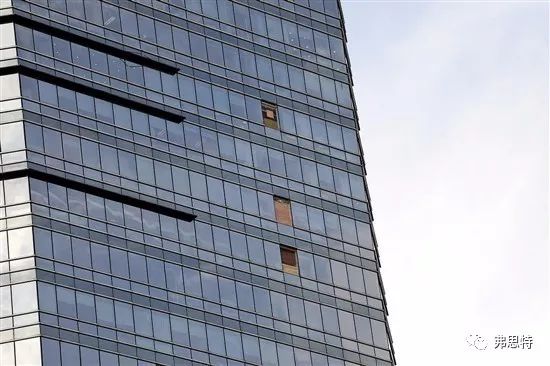
▲ Falling of curtain wall window sash
During the investigation, it was found that the falling window sashes generally had the following problems: a) the spacing of the multi-point lock points of the window sash did not meet the requirements and could not resist the wind pressure; b) the lock points were not installed accurately, the lock points were not collinear, multiple lock points did not share the force, and the damage of one lock point caused a chain effect, resulting in the overall damage of the window sash (the 12-point lock of a project failed).
Therefore, for curtain wall sashes, especially large-sized sashes, the number and spacing of locking points should be arranged reasonably, the installation and positioning should be accurate, and the quality inspection should be in place.
2. Overall falling of unit plate
In the Typhoon Mangkhut, the overall fall of the curtain wall plate of Shenzhen Guoyin Financial Center attracted people's attention, and the specific cause of the fall was still under investigation. When the research team arrived at the scene, they found that the damaged part of the curtain wall had been protected safely, and the bottom of a plate on the right side of the hole had been deformed and warped, but it did not fall. There was another piece of glass down there that was apparently broken when the plate fell. The ground on the first floor has been cleared and no falling objects could be seen.
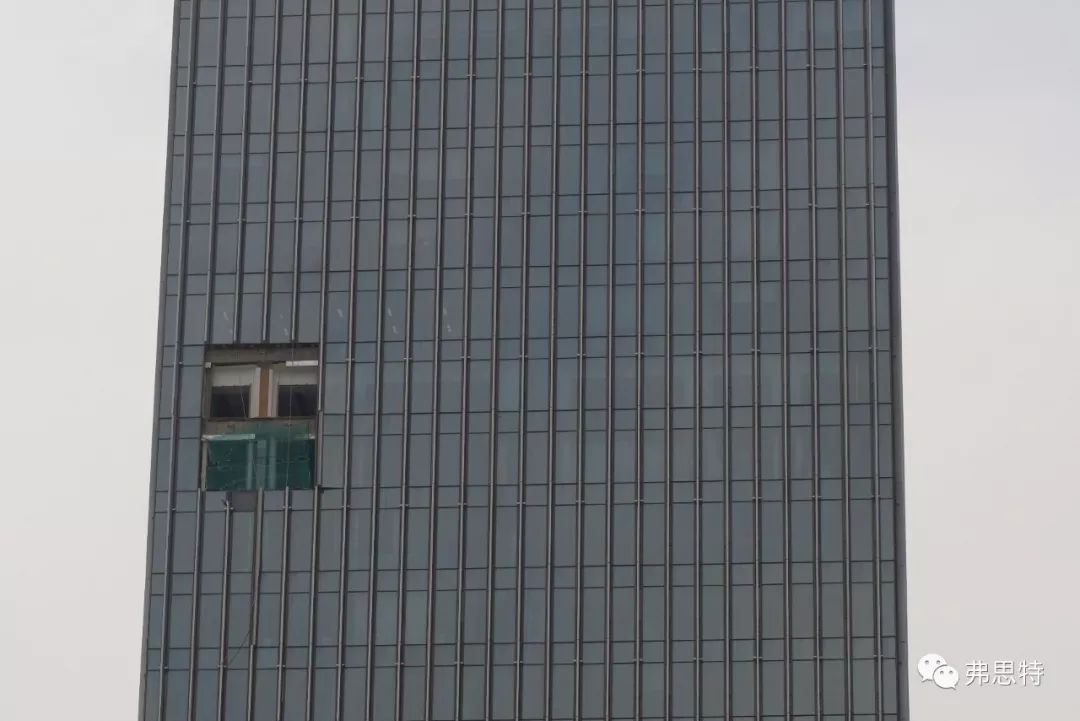
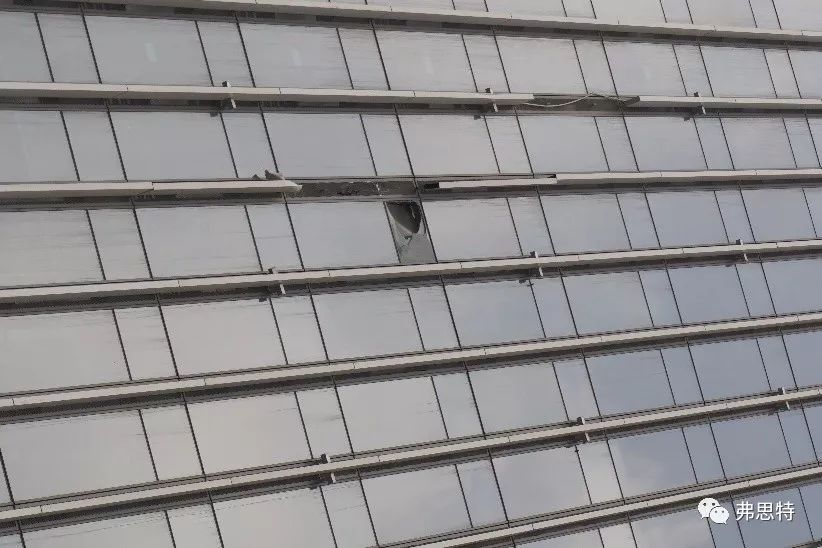
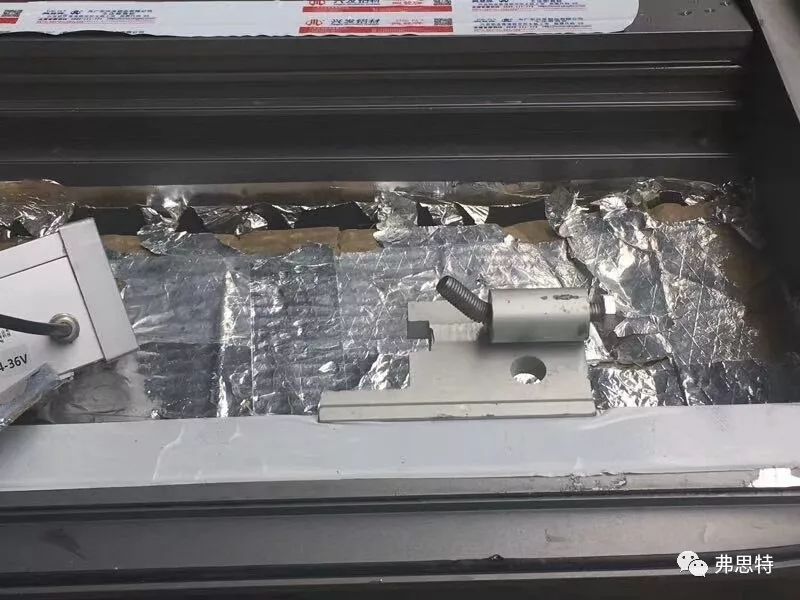
▲ Falling curtain wall plate
According to the photos published on the Internet before, the connecting parts were damaged. Whether the connection failure is the direct cause of the fall remains to be verified, but we can be warned that the anti-drop design of the unit curtain wall is crucial and indispensable. For the unit curtain wall of super high-rise buildings, the anti-drop measures of the curtain wall plate must be considered in the design to ensure the safety of the curtain wall under extreme weather conditions.
3. Damage to glass panel
(1) The narrow passage between buildings increases the instantaneous wind speed
On the spot inspection, it was found that most of the damaged and falling curtain walls were not on the windward side, but on the leeward side and side, including the damaged windows of residential buildings, which seemed to be beyond our expectation. The glass curtain wall of nearly 20 floors of Hongmeng Seaside Plaza Phase 2, located in the wind outlet of Victoria Harbour in Hong Kong, was blown by strong winds. The typhoon came from the southeast, and the damaged curtain walls were behind the side of the building (west and north).
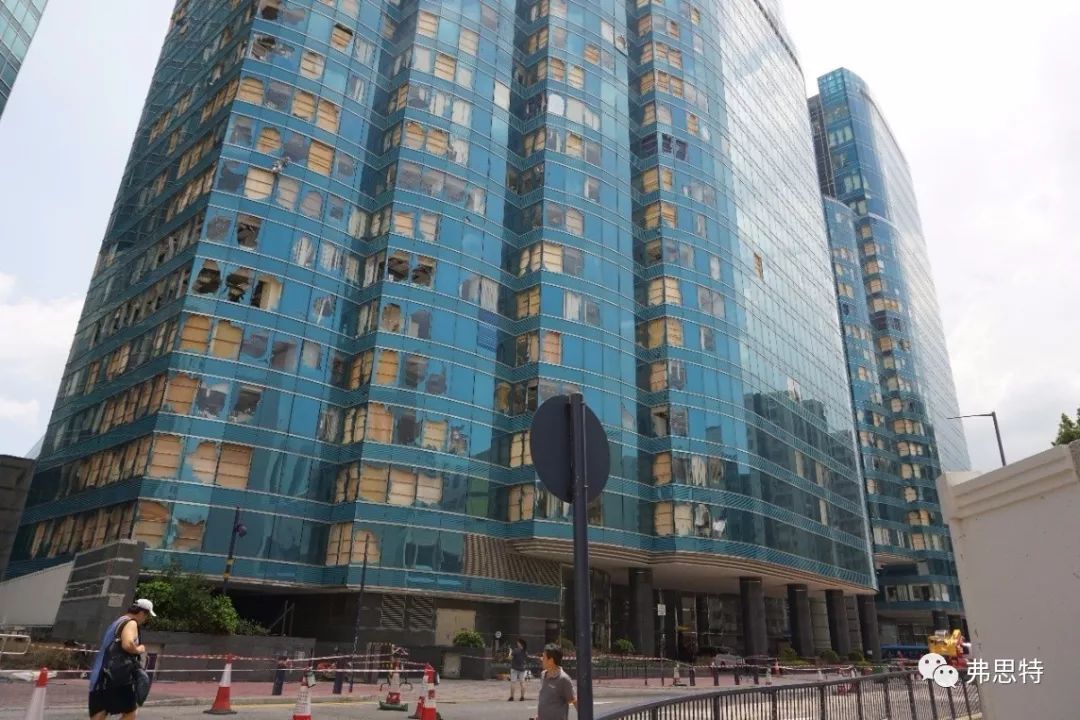
▲ Leeward side after Typhoon Mangkhut (negative pressure area)
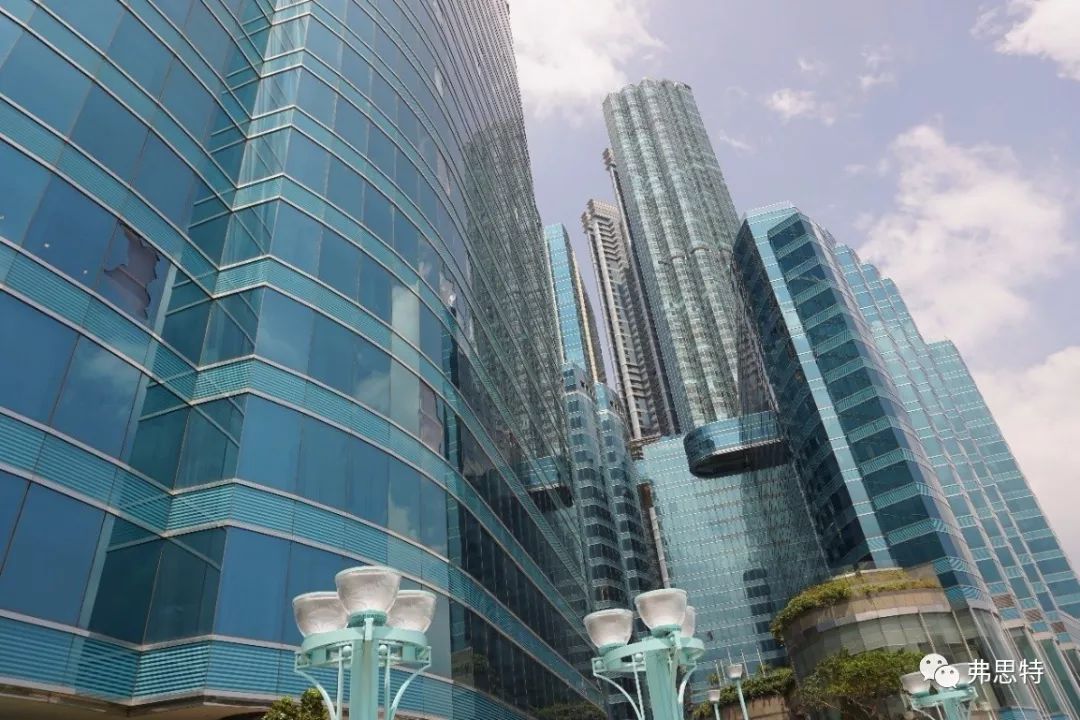
▲ Building facade facing the typhoon
If we look at the environment of the building, we will find that the damaged curtain walls are almost on both sides of the narrow passage of the building. The narrow passage intensified the intensity of the typhoon, resulting in a sudden increase in wind power, resulting in the destruction of the curtain wall.
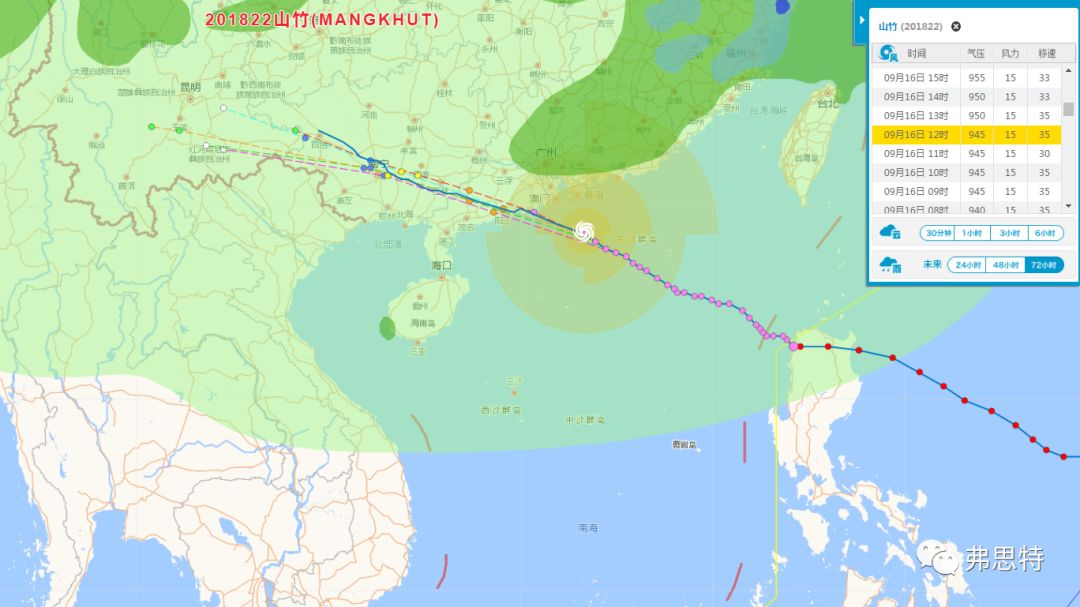
▲ Route of Typhoon Mangkhut
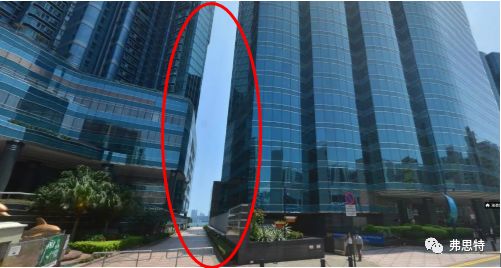
Typhoon Mangkhut came from the southeast and rushed through the passage between the buildings, tearing up the curtain wall glass of two blocks of the seaside square.
Almost all the damaged curtain wall glass in Shenzhen was on the leeward side, and the curtain wall glass facing the typhoon was not damaged much. The curtain wall and glass louver on the front of a project in Shenzhen hit by the typhoon were intact, showing that the curtain wall design strictly following the requirements of the specifications was safe and reliable.
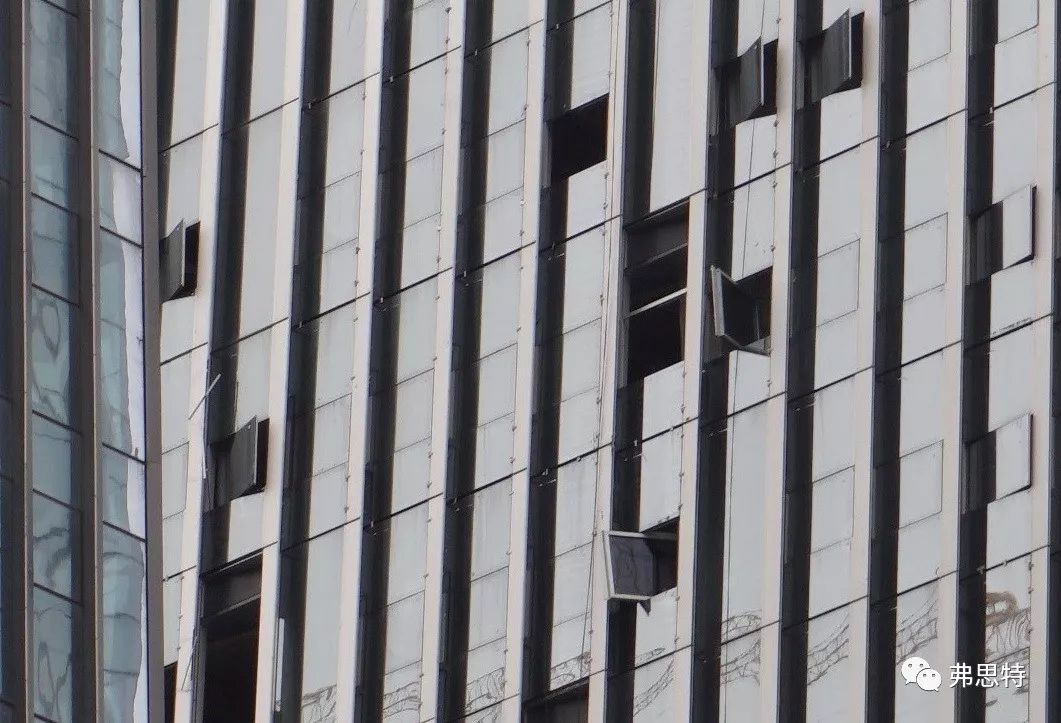
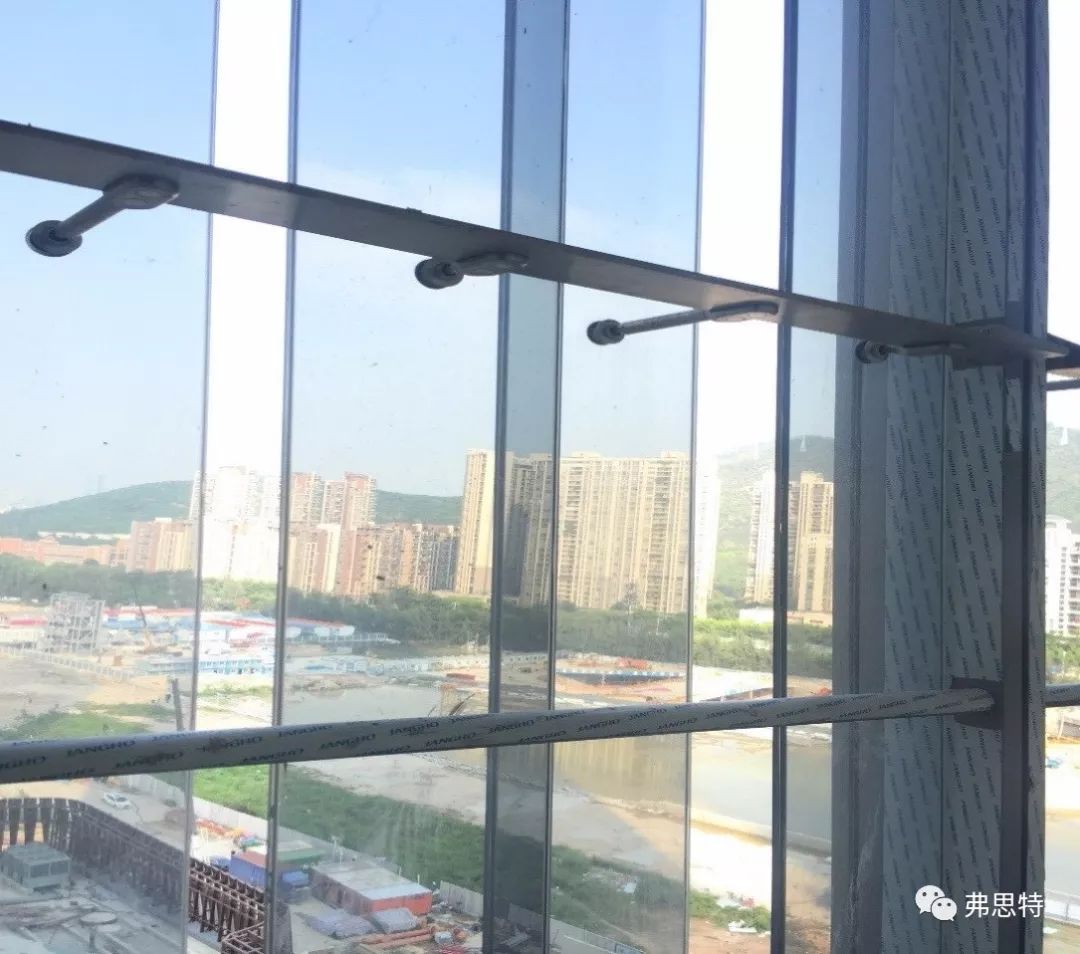
▲ Intact windward glass louver of Shenzhen Qianhai Project
(2) Damage caused by impact of debris mixed in typhoon
The impact of debris carried by typhoons on glass was also one of the reasons for the damage of curtain wall glass panels. The destructive power of high-speed typhoons carrying debris was amazing. The impact of solid debris carried by typhoon first destroyed the weakest glass part of the building, and the splashing of glass fragments caused damage to people's lives and property, and then the strong wind swept the house, causing greater damage to the building.
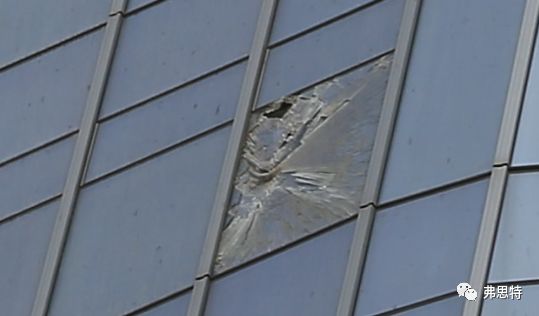
▲ Glass damaged by impact of debris
4. Damage to metal roof
Shenzhen Shekou Cruise Center is located on the south side of Gangwan Avenue, Taiziwan District, Shekou, Nanshan District, Shenzhen, which is the "sea gateway" connecting Shenzhen with the whole world. The project faces the sea on both sides, with 10 floors above the ground and a total height of 64m. The roof is in the shape of a single wave and the plane is triangular. The roof support system is of steel structure consisting of triangle truss + steel purline system. The building height increases from north to south in a wave-like manner. The outer sides of the curtain walls on both sides are supplemented with "coral skin pre-roller coated honeycomb aluminum plate". The total area of the roof is about 21,000 square meters, consisting of 65% metal roof + 35% glass roof.
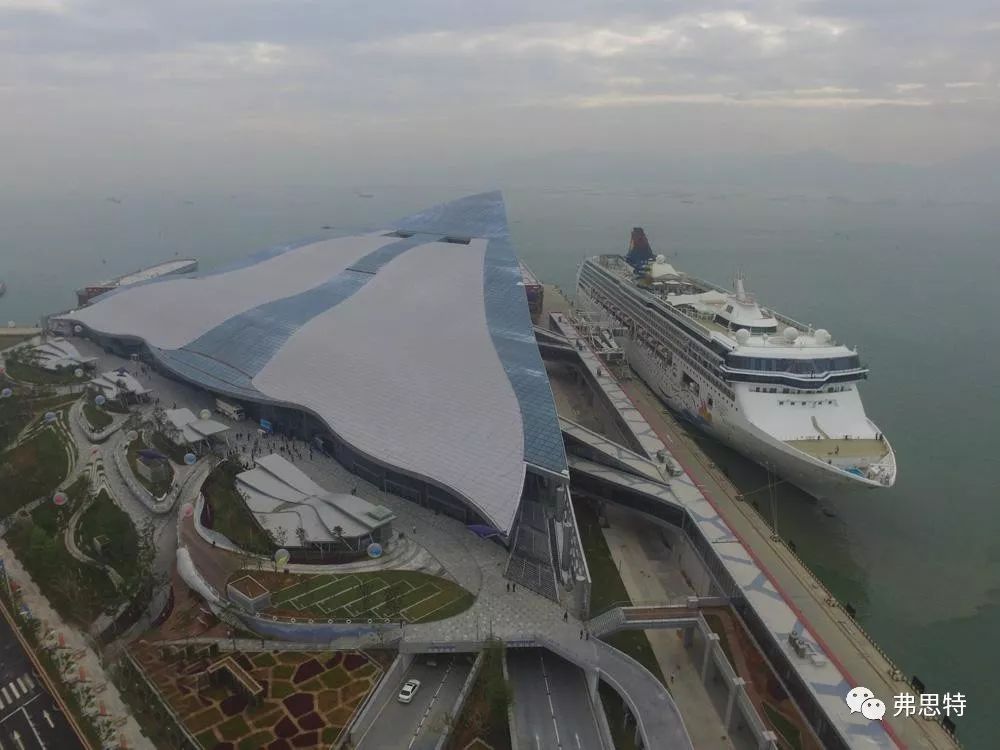
▲ Bird's eye view of Shekou Cruise Center in Shenzhen
The metal roof of the Shekou Cruise Center in Shenzhen was severely damaged by the Typhoon Mangkhut. Large areas of roofing metal plates and insulation materials were blown away by the strong wind, leaving only the metal keel lying there quietly.
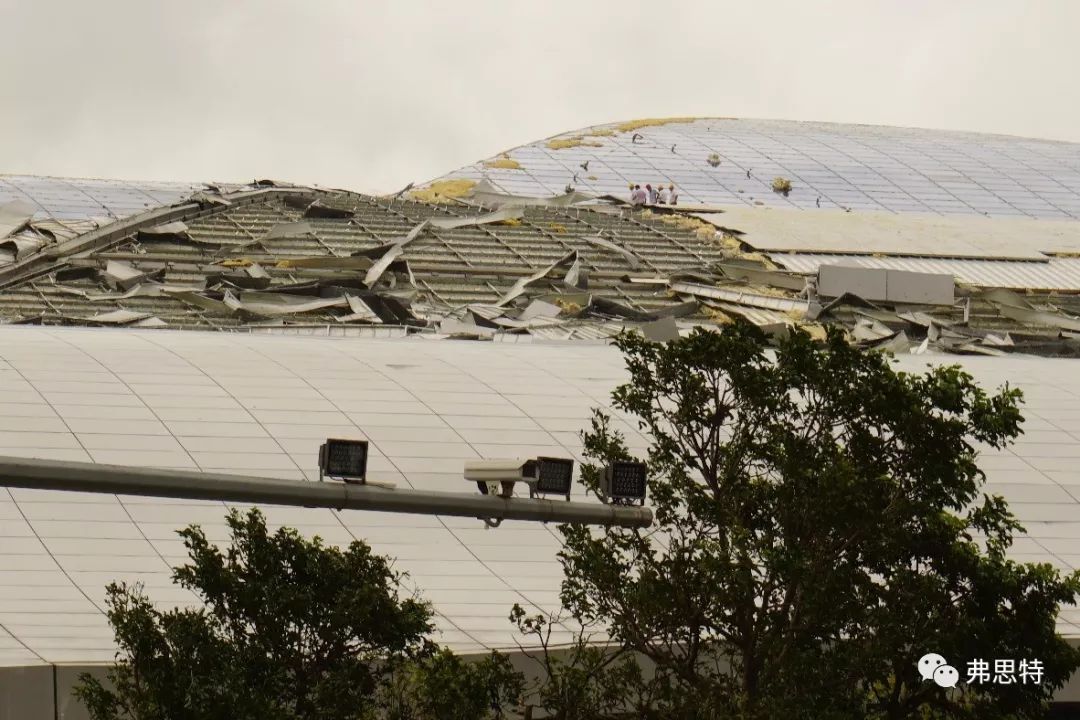
▲ Roof of Shekou Cruise Center damaged by Mangkhut
Due to the lack of close investigation, the specific causes of roof damage can not be identified. According to the research experience of previous projects, the damage to metal roofing with vertical locking edges is mostly caused by the absence of windproof clip.
The installation of windproof clips can improve the overall wind resistance of the metal roof, and the bearing capacity of the standing seam metal roof increases with the decrease of the spacing of windproof clips, so reasonable installation of windproof clips is an effective measure to improve the wind resistance of metal roof. It has been proved by tests that compared with the keel spacing of 1,000mm with a T-shaped connector and a windproof clip, when the spacing of the windproof clip is reduced to 500mm, the wind resistance is about 1.5 times higher.
In July 2012, Typhoon "Vicente" caused great damage to the Al-Mg-Mn plate standing seam metal roof of the Macao East Asian Games Dome’s Gymnasium, and about 3000 square meters of Al-Mg-Mn standing seam roof panels were overturned by the typhoon. Windproof clips were added during the repair and installation in 2013, and the roof was no longer damaged when Typhoon Mangkhut, known as the "Wind King of the Century", passed through.
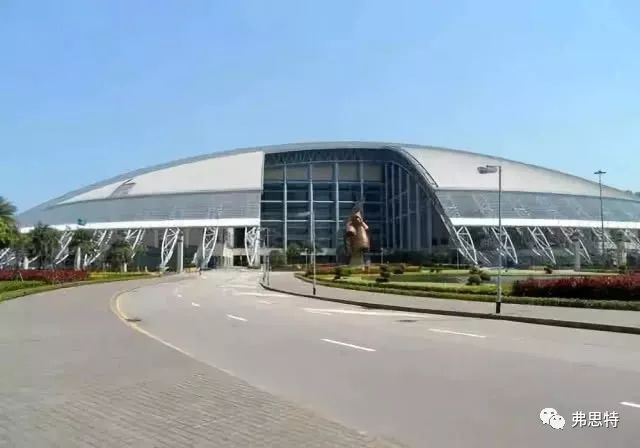
▲ "Macau Dome"-Macao East Asian Games Dome's Gymnasium
-
PreviousImpact of Typhoon "Mangkhut" on Curtain Walls of Buildings in Hong Kong, Shenzhen and Guangdong (IV) — — Cause Analysis and Experience Summary of Damage to Doors and Windows
-
NextImpact of Typhoon "Mangkhut" on the Facade of Buildings in Hong Kong, Shenzhen and Guangdong (2) -- Whether Curtain Wall for Buildings Can Resist Typhoon "Mangkhut"











